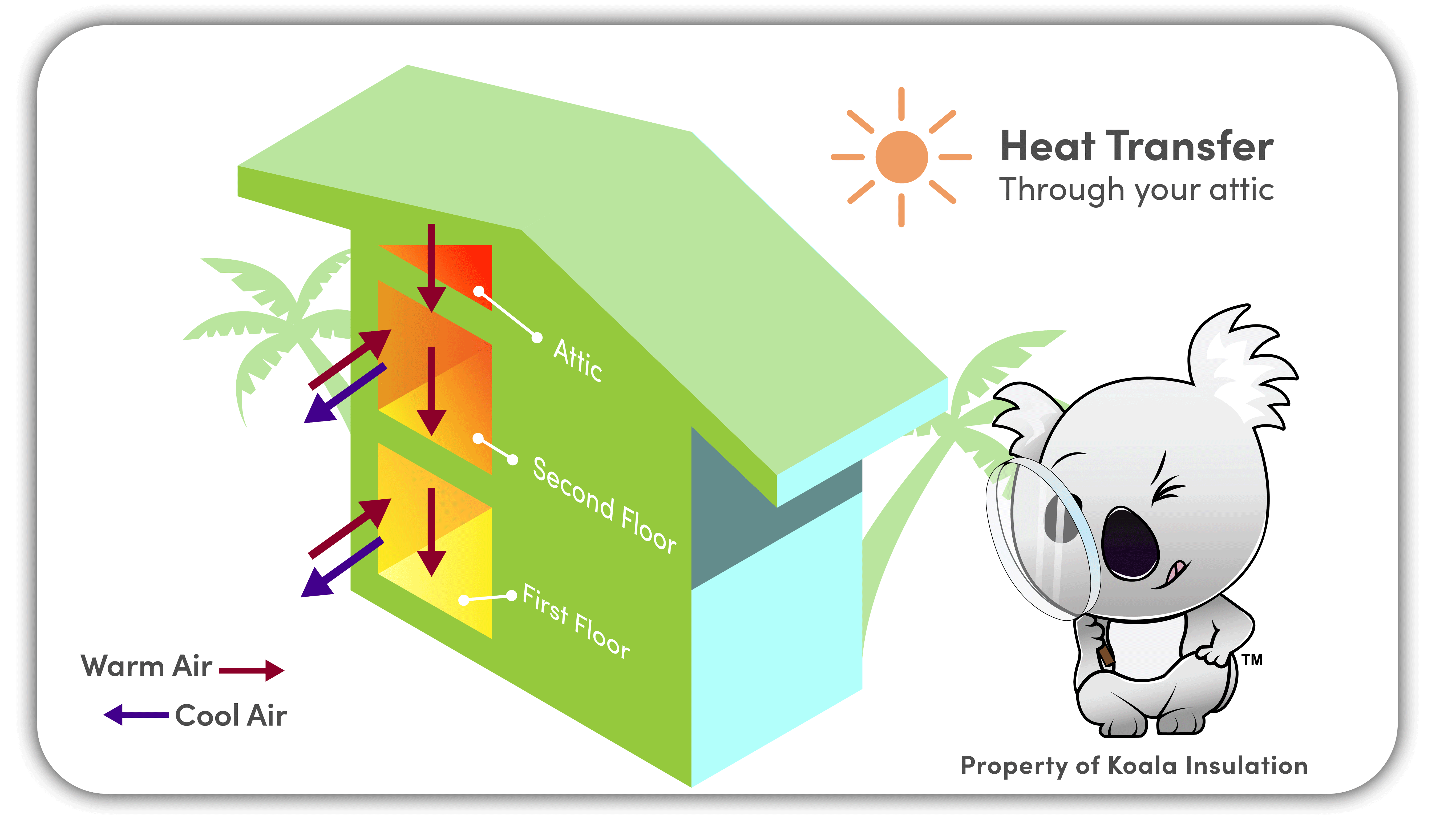
Why Is My Home Always Humid in Pittsburgh PA | Koala Insulation
Why is My Home Always Humid?
If you’re like many who live in humidity-prone areas of the planet, keeping moisture out of your home can seem like an impossible feat. Even when things dry out outside, the inside of your home can be uncomfortably humid.
In this article, we’ll look at whether high humidity in your home is dangerous, the possible causes of excess humidity, and what to do if your home’s insulation isn’t keeping the moisture out.
Is high indoor humidity dangerous?
All indoor environments experience fluctuations in humidity. Usually, this causes no problem. But if the humidity in your home exceeds 50% and stays there, several issues can develop:
- Mold is a significant problem in high-humidity environments. Some types of mold are relatively harmless to humans, while others can cause significant health problems. Black mold, which can trigger respiratory problems, headaches, and other symptoms, thrives in areas where the humidity is above 55%
- High humidity can damage your home. While the occasional humid day won’t cause a problem, chronic high humidity can warp studs, yellow drywall, and break seals. Excess moisture can take a toll on your home’s contents, too - it can ruin wood furniture, important photos and documents, and other items you’d planned on keeping around.
- It’s just plain uncomfortable. High humidity makes hot days feel even hotter. Breathing becomes more difficult. You end up drained of energy and wishing you could move someplace cool and dry. It’s not good for anyone’s day.
So what’s causing my home’s high humidity?
There could be many factors contributing to excess humidity in your home, including:
- Inefficient home ventilation - humidity transferred from outside the home and produced inside the home stays inside because the home’s ventilation system cannot sufficiently move the moist air out of the home.
- Daily activities such as bathing, drying clothes, and cooking - these activities all produce humidity inside the home. Leaks, inefficient range hood vents, and improperly installed or leaky dryer vents can all compound the problem.
- Climate - there may be certain times of the year that are exceptionally humid where you live, making the problem of lowering humidity in your home even more challenging.
- Low-quality, moisture-soaked, improperly installed, or missing insulation - proper insulation not only serves to help control your home’s inside temperature by reducing air transfer between outside and inside, it can help control the humidity in your home. If your home is missing insulation, or the insulation isn’t doing its job, moisture can seep in through the walls and become trapped in your home.
Could replacing insulation help reduce indoor humidity?
In some cases, updating and upgrading your home’s insulation can go a long way toward controlling indoor humidity and keeping your home safer and more comfortable.
In order to control humidity, you’ll need a vapor barrier that blocks moisture and keeps it from transferring from outside your living space. Some types of batt insulation are “faced” with vapor barrier material; with other types, the vapor barrier must be secured before the insulation is installed.
When asking about insulation installation, be sure to ask which types would work best in your home. After all, you’ll want your investment to pay you back in terms of lowering your home humidity and minimizing your heating and cooling costs. Ask about the R-values of different options - a higher R-value generally translates to better reduction of heat transfer.
The two main areas where you can effectively control humidity with installation are in your attic and in your exterior walls. Attic insulation typically comes in batts, although blown-in insulation can allow installers to get the job done quickly. Spray foam insulation, which expands to fill air leaks and cavities between studs, can also be installed in exterior walls to block heat and moisture transfer.
Want to know more about how insulation removal and replacement can help you and your family live more comfortably and worry-free? Click here to get in touch - the friendly professionals at Koala Insulation of Pittsburgh are here to give you the answers you need!
Ready to book your free insulation evaluation?
We have 3 convienant ways for you to get in touch
We Provide Insulation Services to the Following Pittsburgh Areas
South Side, Shadyside, Dormont, Mount Washington, Whitehall, Mount Lebanon, Greentree, Pleasant Hills, Robinson, Oakdale, McMurray, Canonsburg, Cecil, Washington, Downtown, Oakland, Bakery Square, Aspinwall, O'Hara, Lawrenceville, Strip District, Bloomfield, Sewickley, Sewickley Heights, Coraopolis, Moon, Economy, Aliquippa, Ambridge, Baden, Bridgeville, Bulger, Burgettstown, Clinton, Cuddy, Georgetown, Cresent, Hookstown, Joffre, Langeloth, Lawrence, Leetsdale, McDonald, Midway, Morgon, Slovan, South Heights, Sturgeon, Carnegie, Coraopolis, Imperial, McKees Rocks, Presto, Pittsburgh, Washington, Avella, Eighty Four, Hendersonville, Hickory, Houston, Meadow Lands, Muse, Southview, Strabane, Westland, & West Middletown
Counties Served
Beaver County, Washington County, & Allegheny County
Zip Code
15001, 15003, 15004, 15005, 15017, 15019, 15021, 15026, 15031, 15043, 15046, 15050, 15053, 15054, 15055, 15056, 15057, 15060, 15064, 15071, 15078, 15081, 15082, 15106, 15108, 15126, 15136, 15142, 15143, 15201, 15202, 15203, 15204, 15205, 15206, 15207, 15208, 15209, 15210, 15211, 15212, 15213, 15214, 15215, 15216, 15219, 15220, 15222, 15223, 15224, 15225, 15226, 15227, 15228, 15231, 15232, 15233, 15234, 15236, 15241, 15243, 15260, 15261, 15275, 15276, 15290, 15301, 15312, 15317, 15321, 15330, 15339, 15340, 15342, 15347,15350, 15361, 15363, 15378, 15379
